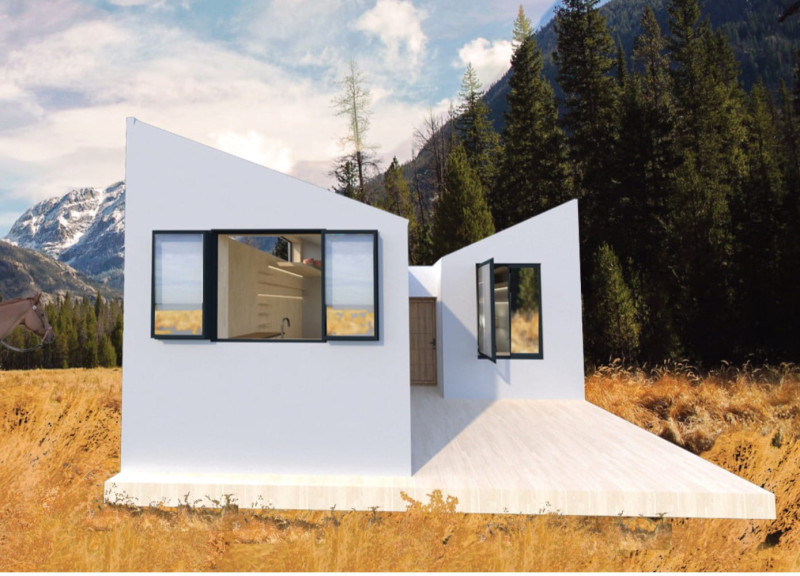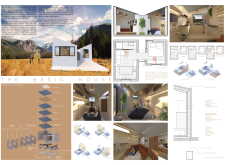5 key facts about this project
The project presents a housing solution that prioritizes clarity and functionality. Located in an urban environment, it aims to create essential living areas that address basic human needs, such as eating, sleeping, and socializing. The design fosters a sense of space, ensuring that living areas feel both compact and open. It is a thoughtful response to the demands of modern living.
Layout and Spatial Organization
The structure is carefully organized into private and public areas. The private section includes a bedroom, while the public spaces are made up of a kitchen, living room, and bathroom. This layout enhances privacy while allowing for social interaction. An entryway serves as a buffer, clearly separating these two domains and facilitating movement throughout the house.
Kitchens and Multifunctionality
The kitchen features an elevated platform that adds visual interest and provides necessary storage solutions. This clever design houses hidden beds and essential utilities, such as batteries and wires, optimizing space use. The living area exemplifies multifunctionality, easily converting into a guest room by incorporating a hidden bed that connects to the sofa or dining area.
Sustainability Features
Sustainability is central to the design. A solar panel system meets the energy needs of the home, indicating a commitment to environmental responsibility. The integration of a rainwater collection system, grey water collection, and a composting toilet allows the house to operate independently of traditional municipal services, highlighting its off-grid capabilities.
Materiality and Aesthetics
Materials play an important role in the overall design. The structure is built using Cross Laminated Timber (CLT), which provides both sustainability and strength. The exterior is clad with lightweight prefab concrete panels, which enhance the contemporary appearance of the building.
High slanted ceilings create an open feel, while large windows allow natural light to fill the interior. This design connection with the outside environment fosters a bright and inviting atmosphere, reflecting an integration of comfort and practicality in daily living.


















































